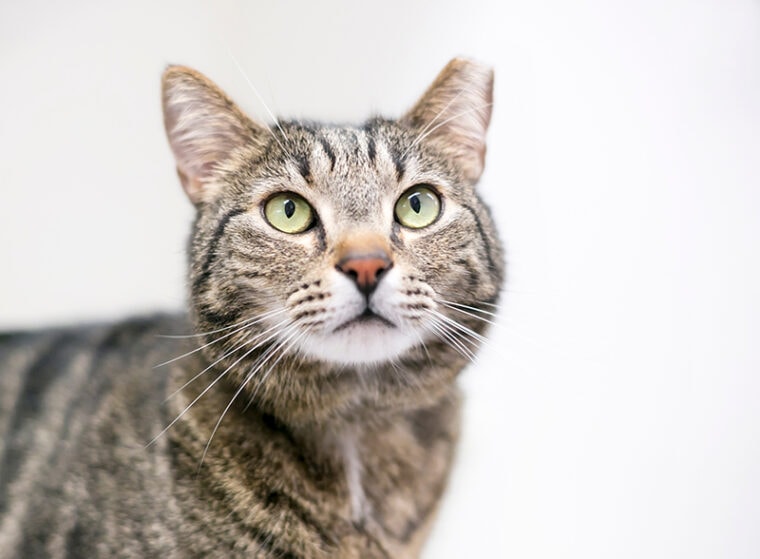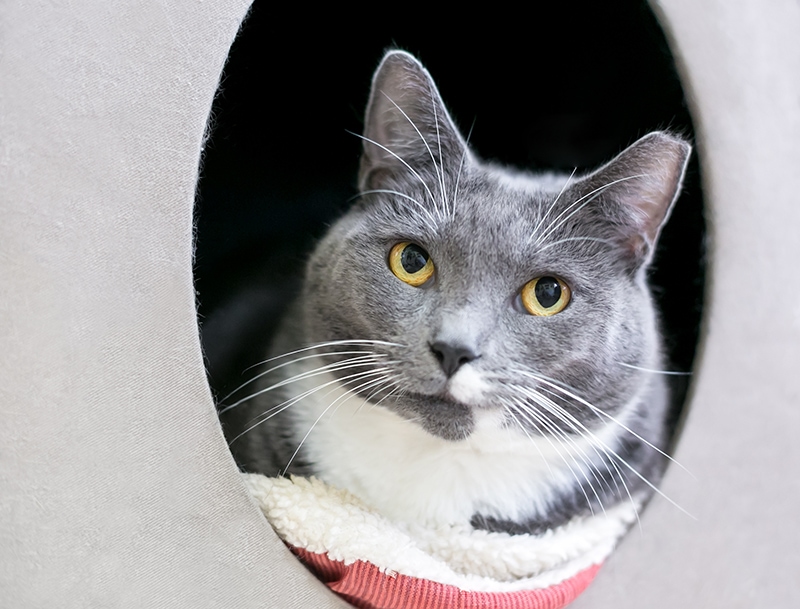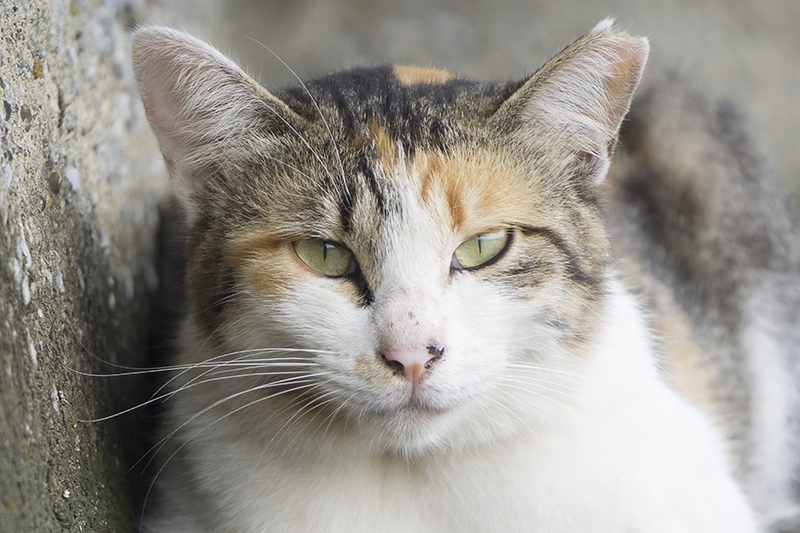
Ear tipping for cats: what is it, exactly? If you’re not aware of this term, you’ve come to the right place. The term alone sounds like an inhumane and unethical act, but is it considered inhumane and unethical? To better understand, ear tipping is not considered inhumane or unethical because it helps keep community cats healthy to live out their best lives.
Before we get into what ear tipping is and why it’s done, we should note that cats are under anesthesia for the procedure, and it’s not painful to the cat. In fact, if a cat has a tipped ear, it means he or she is healthy. However, there is some debate regarding the program and whether it’s ethical. Read on to learn more about ear tipping for cats and why and how it’s done.
How Does It Work?
Anyone who has crossed the path of a feral or community cat knows these cats are almost impossible to interact with. These cats have lived their entire lives outside and on their own, which also means they probably have not received any medical care, such as the necessary vaccinations for a healthy life. That said, there is a program called Trap-Neuter-Vaccinate-Return, or TNVR, that allows feral or community cats to be vaccinated, spayed or neutered, and then released unharmed. But how does ear tipping come into play? Ear tipping is a way to prove that the cat has been through the TNVR program, meaning the cat has been vaccinated, spayed or neutered, and returned where it came from.
Under anesthesia, a small, v-shaped tip of the cat’s left ear (sometimes the right ear) is clipped off, inflicting no harm to the cat.1 Cats are humanely captured with box traps and brought to a local veterinarian, where the cat will receive all necessary vaccinations, be spayed or neutered, have the left ear clipped, and returned safely to where it came from.
It’s important to return the cat where it came from because it is already familiar with food and water sources in that particular location, as well as shelter. Some argue that the cats are returned anywhere; however, this is false.

What Does PETA Think of the TNVR Program?
People for the Ethical Treatment of Animals (PETA) does not think the program works and feels it encourages people to abandon their own cats, thinking the cat will be “cared for” or left to fend for itself.2 An estimated 3.2 million cats enter shelters each year,3 and the TNVR program may help cut down on these numbers. Think about this: a feral cat may only live 1 to 5 years outdoors on its own, whereas an indoor cat that is taken care of can live 12 to 20 years with proper care.
However, PETA claims that some cats that go through the program may not even be feral but simply lost from their owner, which is where the debate comes in. So, to TNVR or not TNVR? Since we’re bringing this to light, most cats who are simply lost or out for an unapproved stroll should have a collar on with all their information and be microchipped; that way, the cat will be easily identified as not a feral or community cat and can be safely returned to the owners. The TNVR program gives community cats a chance to live a healthier life in the wild since they have no owners to take care of them; therefore, the program is mostly looked at as ethical and humane.
Imagine a community cat without vaccines, such as the rabies vaccine. When a community cat is caught and run through the TNVR program, the cat will receive the rabies vaccine and any other necessary vaccines. Also, by being spayed or neutered, the cat cannot keep reproducing feral cats that will roam the streets and add to the statistics of homeless cats entering shelters each year.
However, not all animal-supported programs have the same view as PETA. The American Society for the Prevention of Cruelty to Animals (ASPCA) stands behind the TNVR program and views it as a way to cut down on the feral cat population and keeps these cats healthier. Most community cats are not adoptable because they prefer to avoid human interaction and have adapted to living outdoors. Still, the TNVR program helps them avoid sickness, which is a good thing.

Where Is Ear Tipping Done?
Ear tipping is performed in any community that participates in the TNVR program. The program is practiced all across the United States as well as globally. Numerous animal protection organizations support the program, including ASPCA, the Humane Society of the United States (HSUS), the American Animal Hospital Association (AAHA), and the National Animal Care and Control Association (NACA).
Advantages of Ear Tipping
Apart from allowing a community cat to have a healthier life, ear tipping lets veterinarians know that a cat brought in with a tipped ear has already been vaccinated and spayed or neutered. Knowing this information prevents unnecessary surgery. Consider this scenario: if you spot an injured community cat and take it to the vet for care, the tipped ear will be a clear indicator that the cat has been vaccinated and does not require it to be spayed or neutered.
Disadvantages of Ear Tipping
Some people or animal protection organizations, such as PETA, feel the TNVR program is unethical and speak negatively of the practice. In reality, the only disadvantage we can see is a cosmetic flaw with the tipped ear. The procedure is performed under anesthesia, causing no pain to the cat. The ear also heals quickly with little to no bleeding. In short, it’s hard to argue a disadvantage because the program works to keep the feral cat population down and gives these cats a chance at a healthy life.

Frequently Asked Questions (FAQs)
Does Ear Tipping Alter a Cat’s Personality?
Ear tipping does not alter a cat’s personality. In fact, the only flaw is the cat will have a slightly cosmetically- altered appearance with that ear, but the tip is very small and does not discourage people from adopting an ear-tipped cat through a shelter.
Can I Interact with an Ear-Tipped Cat?
Odds are, if you see an ear-tipped cat, the cat will be skittish and not come to you. However, you should leave the cat alone and let it be. Feral cats, especially those who have been through the TNVR program, have had all the necessary vaccines and have been spayed or neutered. Community cats may get used to seeing the same people and may not run from you, but unless the cat is injured, let the cat be.
How Can I Help Community Cats in My Area?
One way to help community cats is by becoming a community cat caretaker. Being a community cat caretaker means keeping an eye out for these cats and providing food, water, and shelter if needed. Most community cats do not want human interaction, but they will pick up on the fact that you are leaving resources out for them; they may not allow you to interact, but that doesn’t mean they will not take advantage of such resources.
If you spot a community or feral cat, contact a local shelter to see if the TNVR program is available in your area. You can also provide assistance to your local TNVR program (if your community has one) by offering transportation to the veterinarian, offering shelter after surgery, and assisting in the trapping process.
Conclusion
While some people and organizations may view the TNVR program as being cruel and unethical, not everyone feels the same. This program is widely supported and effective in keeping community cats under control.
The program helps reduce the number of feral or community cats roaming around with no medical care, and the cats are caught in humane traps and returned to where they were captured. In the end, it’s a win-win for all.
Featured Image Credit: Mary Swift, Shutterstock







